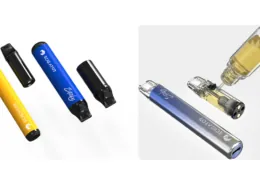E-cigarettes, HTPs, Pouches Effective for Quitting Smoking, Advocates Argue
World Vapers Alliance Urges WHO and Policymakers to Embrace Harm Reduction
As global efforts continue to combat the health crisis caused by smoking, advocates are increasingly highlighting the role of tobacco harm reduction (THR) tools. Organizations like the World Vapers Alliance (WVA) argue that products such as e-cigarettes (vapes), heated tobacco products (HTPs), and nicotine pouches are highly effective in helping adult smokers quit combustible cigarettes and should be central to modern tobacco control strategies.
The core principle behind THR is acknowledging a spectrum of risk among nicotine products. While nicotine itself is addictive, the overwhelming majority of smoking-related death and disease is caused by the thousands of toxic chemicals released during the combustion (burning) of tobacco. Smoke-free alternatives like vapes, HTPs, and pouches eliminate this combustion process, thereby significantly reducing users’ exposure to harmful substances. This distinction is critical, yet often overlooked in policy debates, according to THR proponents.
Scientific Backing for Reduced Harm
A significant body of evidence supports the reduced-harm potential of these alternatives compared to traditional cigarettes. Notably, Public Health England (now the Office for Health Improvement and Disparities) famously concluded that vaping is likely at least 95 percent less harmful than smoking. Human biomarker studies, which measure exposure to harmful chemicals in the body, consistently show substantially lower levels of toxicants in users who switch completely from cigarettes to smoke-free products.
French oncologist Dr. David Khayat emphasized this point, noting that transitioning smokers to smoke-free alternatives could lower cancer risk. He highlighted scientific findings showing that the high temperatures reached during combustion are responsible for generating the vast majority of harmful substances found in cigarette smoke. By heating tobacco or nicotine solutions at much lower temperatures without burning, HTPs and vapes produce aerosols with significantly fewer and lower levels of harmful constituents.
Effectiveness in Smoking Cessation
Beyond reduced harm, advocates point to growing evidence of effectiveness in helping smokers quit. The WVA highlights that even partial switching can be a valuable step towards complete cessation for some individuals. A landmark randomized controlled trial published in the New England Journal of Medicine found vaping to be nearly twice as effective as traditional nicotine replacement therapies (NRTs) like patches or gum for smoking cessation. This has led health bodies like the UK’s National Health Service (NHS) to conduct trials providing vape starter kits to smokers in hospital settings.
Consumer perception also plays a crucial role. Research from Brighton and Sussex Medical School indicated that smokers who correctly perceived vaping as less harmful than smoking were significantly more likely to switch later on. This underscores the importance of correcting widespread public misperceptions about the relative risks of vaping versus smoking.
Criticism of Current Global Policy Approaches
Despite this evidence, the WVA strongly criticizes the approach taken by major international bodies like the World Health Organization’s Framework Convention on Tobacco Control (FCTC), which marks its 20th anniversary in 2025. In a report titled “Rethinking Tobacco Control,” the WVA argues the FCTC’s “stubborn refusal” to acknowledge the potential of harm reduction tools like vaping, nicotine pouches, and HTPs has hindered cessation efforts and “likely cost millions of lives.”
They point to countries like Sweden (which achieved smoke-free status with smoking rates below 5%, largely attributed to snus and nicotine pouches), the United Kingdom, and New Zealand as success stories. These nations adopted more evidence-based, risk-proportionate approaches to THR, resulting in significant declines in adult smoking rates.
The Nicotine Consumers Union of the Philippines (NCUP) echoed the WVA’s call for consumer choice, stating smokers should be allowed to choose less harmful products like e-cigarettes, heated tobacco, or nicotine pouches.
The Path Forward: Embracing Evidence-Based Harm Reduction
Proponents argue that effective tobacco control requires embracing the full spectrum of evidence-based tools. This includes recognizing that nicotine itself is not the primary driver of harm and understanding the varying levels of risk across different product categories, with nicotine pouches often considered among the lowest risk smoke-free options.
They advocate for policies that encourage smokers who cannot or will not quit nicotine entirely to switch to significantly less harmful alternatives. This includes ensuring the availability of vaping products with a variety of flavors, which many former smokers report as crucial in helping them stay off cigarettes, and regulating nicotine pouches appropriately.
Studies showing rapid improvements in vascular health markers within days of smokers switching to vaping further illustrate the potential immediate benefits and can serve as motivation. The WVA and other advocates urge policymakers globally to move beyond prohibitive stances and adopt risk-proportionate regulations based on scientific evidence, consultation, and the real-world experiences of millions who have successfully used these tools to quit smoking.







